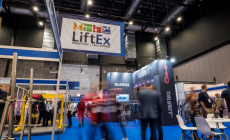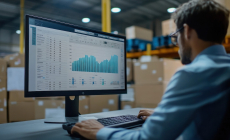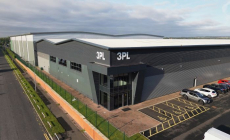-
Women Leading the Way in the UK Material Handling Industry - December 12, 2025
-
LiftEx 2025 live from Liverpool - December 11, 2025
-
DATA ANALYSIS – THE FOUNDATION OF EVERY PEAK SEASON - December 5, 2025
-
Creative education specialists Creative Hut give 3PL full marks for onboarding excellence - December 5, 2025
-
Unlimited Industries raises $12M to build the AI construction company that will power America’s future - December 4, 2025
-
Scottish Leather Group gets full-support solution from Rushlift - December 4, 2025
-
Etaily lands strategic investment from Japan’s SMBC – bringing total funding to $24M for Social Commerce enablement platform - December 4, 2025
-
Winners lift their LEEA Awards and raise the industry - December 4, 2025
-
Prism eLogistics and Brand Angels Partnership Gives Brands the Full Package - December 3, 2025
-
New data shows Tesla in danger of losing its way as European consideration to buy Chinese cars jumps 16% in 12 months - December 3, 2025
Save Maintenance, Save Costs, Save Lives: How Plastic Barriers Can Transform a Warehouse
That old and rusting steel barrier you might see in some dark warehouse on an even darker
industrial estate – what impression does it give? Care or neglect? Brightness or dullness? Safety or danger?
Likely it gives a negative impression, yet it was probably installed with good intentions, by a conscientious manager trying to implement some sort of health and safety practice.
But steel doesn’t age well. It corrodes, it dents, it scratches, the paint flakes, it’s hard to clean.
What was once a gleaming guardrail is now a faded obstacle, its rough edges themselves a
potential injury hazard.
Around its footings the concrete is chipped and the barrier itself wobbles – the result of too
many bumps and grazes from FLTs and hand pallets on an inflexible material.
Now, it’s less an example of a warehouse manager doing the right thing, but more an
embarrassing relic from a ‘When Health and Safety Goes Wrong’ video.
So what does a new Facility Manager do? Certainly, if the impression the barrier gives is
negative, if it’s an injury hazard, if it isn’t fit for purpose anymore, then it needs replacing.
Plastic barriers are resistant to scratches, do not corrode, do not require repainting, have a
wipe-clean surface and do not chip, meaning maintenance costs are slashed to near zero.
Even better, their flexible nature is their inherent strength. It ensures impacts are absorbed
and the barriers reform, looking as good as new and protecting those costly floors in the
process.
The important demands of health and safety put pressure on maintenance costs and
preventing staff injury and facility downtime is every warehouse manager’s priority. So why
not kill two birds with one stone?
Flexible, plastic barriers from McCue are a working solution used the world over. The days of
the rusting steel guardrail are numbered.
View McCue’s range of barrier protection solutions at www.mccue.com/uk.

































